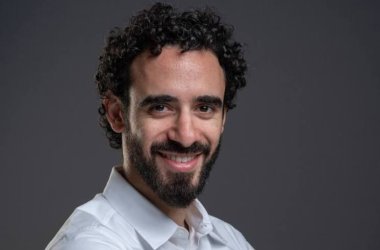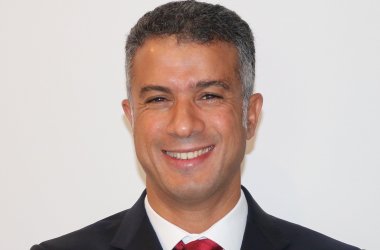Dubai, UAE, 2 May 2021: Cities face many challenges stemming from societal and technological changes, with population growth, urbanisation, infrastructure provision, cybercrime, and environmental pollution driving the increasing necessity for new digital use cases. Looking ahead, projects based on 5G, the next generation of mobile network technology, will help overcome these challenges and enhance economic development across industries. Arthur D. Little (ADL), the management consultancy firm with the longest-standing presence in the Middle East, expound this viewpoint in their latest report entitled “Is your city ready to go digital? How 5G use cases will unleash your city’s full potential”. The report details how 5G is fundamentally changing the way by which cities can shape urban life for citizens and improve ecosystems for corporations, providing strategic insights and a comprehensive explanation of why cities must pursue the technology.
ADL highlights that 5G implementation frameworks must address two main points. Firstly, cities must decide which 5G use cases are of strategic importance to them and whether they should be provided by the city itself. Secondly, cities must overcome 5G infrastructural challenges by building infrastructure or supporting telecom operators’ efforts to carry out the same mandate. Should these areas not be addressed, people and businesses may view relocation as the answer to declines in competitiveness and quality of life caused by insufficient technological infrastructure coverage in their city. However, new applications based on 5G can make valuable contributions in tackling the challenges above, ultimately preventing residents and organisations from seeking opportunities elsewhere.

“Across the Middle East, we see cities facing population, pollution, urbanisation, and infrastructure issues. If they continue to exacerbate at current rates, many people are sure to look elsewhere to live, and economies will suffer from businesses going in the same direction”, said Andrea Faggiano, Partner, Telecom, Information, Media & Electronics Practice Lead at Arthur D. Little Middle East & India. “Fortunately, this scenario hasn’t yet transpired. There are plenty of reasons for us to be optimistic, and one of these is 5G. Because the technology can help cities overcome such problems, it can ensure they become attractive places to live and work not just for ourselves, but also for the next generation. What’s equally encouraging is that 5G use cases are coming to fruition in numerous countries, serving as sources of inspiration for others to follow. As city leaders establish a 5G blueprint that helps achieve their sustainability and digital transformation goals, they can take confidence that others are already paving the way for them to learn from and improve on”.
Cities defining well-grounded 5G strategies will significantly increase citizens’ living standards, boost attractiveness for businesses, and drive industrial, public, and business-related use cases. In the UAE, Jebel Ali Free Zone is transforming through the development and implementation of smart applications, including drone monitoring and employee geo-location systems. At the same time, Dubai Silicon Oasis has become a recognised proof of concept destination for several innovative city projects, with public and private sector collaborations continuing to yield positive impacts and outcomes. Besides such partnerships ensuring proper technological integration, the community has also served as a hub for successful autonomous vehicles testing with the provided 5G network.
Similarly, in the KSA, 5G is anticipated to play a major role in industry digitalisation. Yanbu Industrial City and King Salman Energy Park (SPARK) are two developments that have announced new partnerships with ICT companies to build and integrate 5G infrastructure for advanced manufacturing purposes. Flexibility and the continued automation of robots for manufacturing and warehouse transportation hinges on cutting-edge capabilities, and 5G will be crucial to facilitating advancements and paving the way for this new wave of industrialisation or what is known as Industry 4.0 where smart digital technologies transform traditional practices.

“These examples mirror the futuristic roadmaps that Middle Eastern cities are pursuing”, explained Dr. Raymond Khoury, Partner, Digital Technology and Innovation Management Lead at Arthur D. Little MEI. “Besides addressing sustainability barriers, regional cities are advancing new needs and capability requirements, and in doing so, creating working opportunities for young talent and shaping a bright future for tomorrow’s business ecosystems. Hence, the positive outcomes being delivered by such use cases are sure to help cities unlock 5G’s full potential in due course. Some cities will bring similar projects to life based on their models, which will move them closer to a new era of sustainability”.
“Is your city ready to go digital? How 5G use cases will unleash your city’s full potential” also sheds light on the extensive possibilities that accompany 5G, highlighting several use cases across critical national sectors such as public transport, public safety, healthcare, energy, education, tourism, retail, media, and agriculture. Furthermore, the report reveals the technical feature requirements of 5G-based solutions, including spectral efficiency, low latency, high device density, high data rates, lower power consumption, considerable bandwidth, and strong reliability.
“Although cities may currently be facing daunting prospects in worst-case scenarios, unfolding 5G use cases are showing residents and businesses that promising prospects lay ahead in the coming years”, concluded Dr. Khoury. “By promoting 5G use case development and providing all the necessary support, infrastructure advancements can be accelerated, and associated benefits capitalised on. 5G is without doubt a unique infrastructure gateway for cities to realise their full potential, and in doing so, transform digitally to the status of ‘smart cities’ in a more expeditious manner”.
A full copy of the report can be found here.





